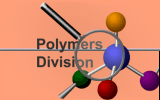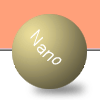High-Throughput Probe Tack Test
|
| |
Introduction
|
 |
Motivation
As part of the mission of the NIST Combinatorial Methods Center,
we are developing a C&HT probe tack test that enable rapid
assessment of adhesion within the large parameter space associated
with adhesive formulation and processing.
Objective
To design and apply a combinatorial probe tack apparatus for
investigating the adhesive performance of model pressure sensitive
adhesive (PSA) as a function of temperature
PSA (Pressure Sensitive Adhesive) : Materials that will wet
a surface quickly under light pressure and will resist detachment
with a clean removal
PSA must have “balance of properties”
• Tack (holding power) vs sufficient cohesive strength
(clean removal)
• Effect of temperature on PSA performance is important,
but complex
|
Experimental
|
 |
| Instrumentation |



|
| |
| Effect of T on Load Cell |
 |
| |
Problem: Load is sensitive to temperature change
Solution: 4cm glass rod insulation between the load cell and
the probe
|
| Data Analysis |
 |
| |
Results
|
 |
| |


|
| Load-displacement and stress-strain curve measured on several
position (different temperature) for a SIS based model PSA.
Stress is normalized by maximum contact area and strain is normalized
by film thickness (~150 ?m )
|
 |
| Maximum elongation, stress, and adhesion energy as a function
of temperature obtained from load-displacement curve and stress-strain
curve
|
 |
| Contact images obtained during debonding process. The diameter
of the contact is ranged 0.5-0.7 mm that is much smaller than
the value estimated from JKR theory (aJKR =8 mm) due to the
confinement of the film.
|
| |
Summary
|
 |
Combinatorial probe tack apparatus has been successfully installed
and applied to PSAs.
This experimental design provides significant
reduction of experimental uncertainties as well as reduced
the overall measurement time.
An orthogonal gradient can be easily applied by introducing
another parameter such as contact time, velocity, or aging time.
|
| |
Future Work
|
 |
Future work includes:
Effect of UV curing (2-D library)
Combinatorial aging
|
| |
| |
NIST Contributors:
|
 |
| Aaron M. Forster, Wenhua Zhang, Arnaud Chiche, Seung-ho Moon,
Christopher M. Stafford |
| |
| |












